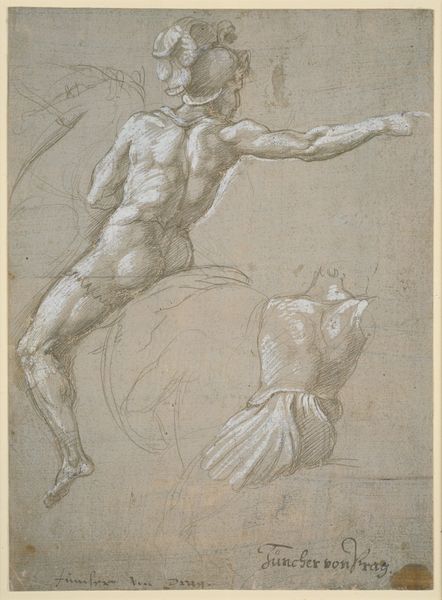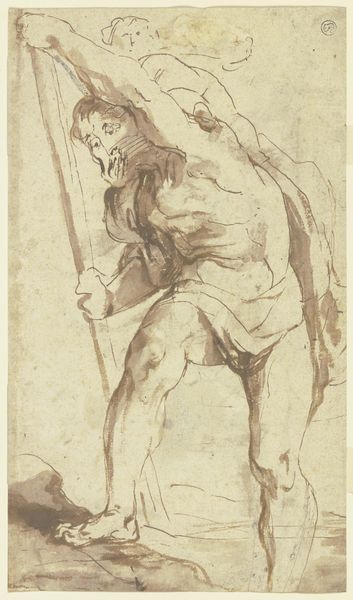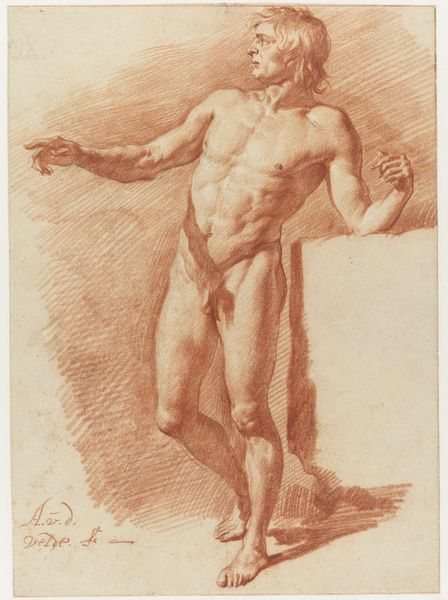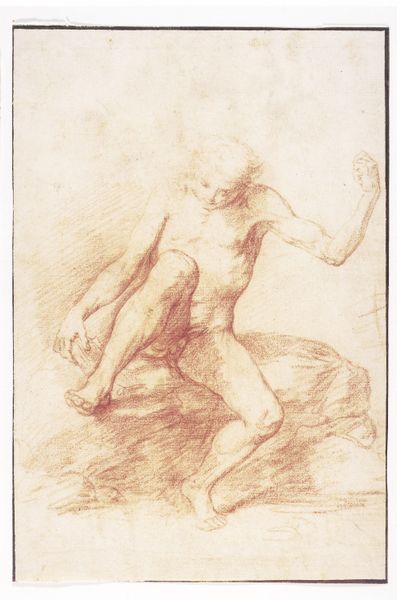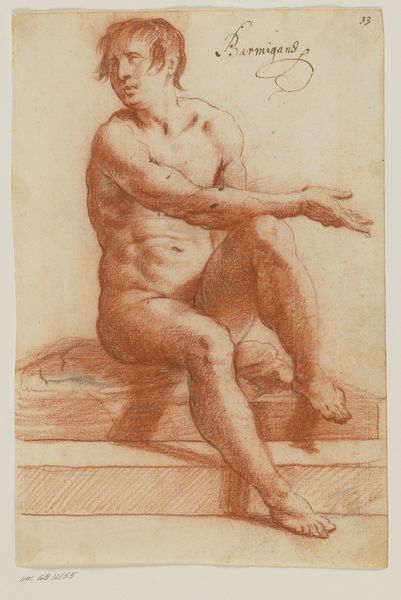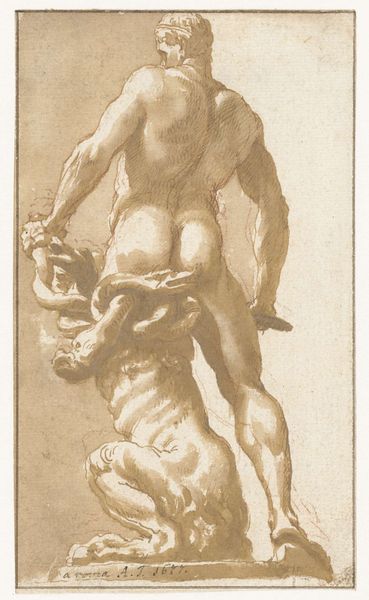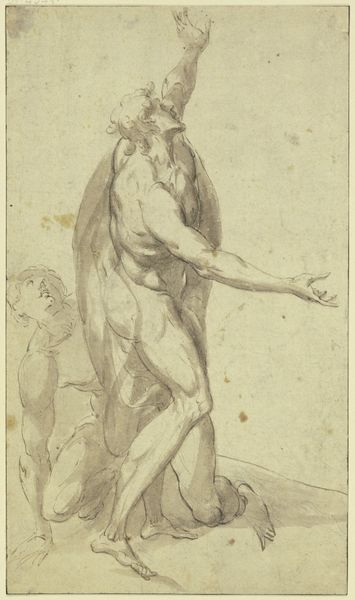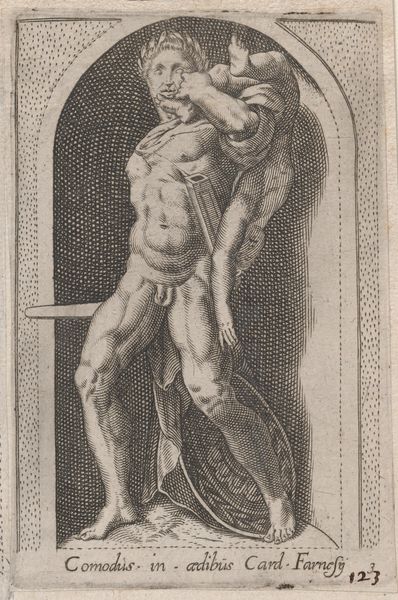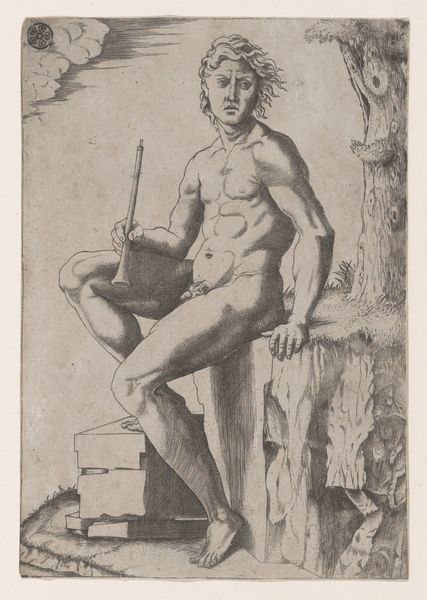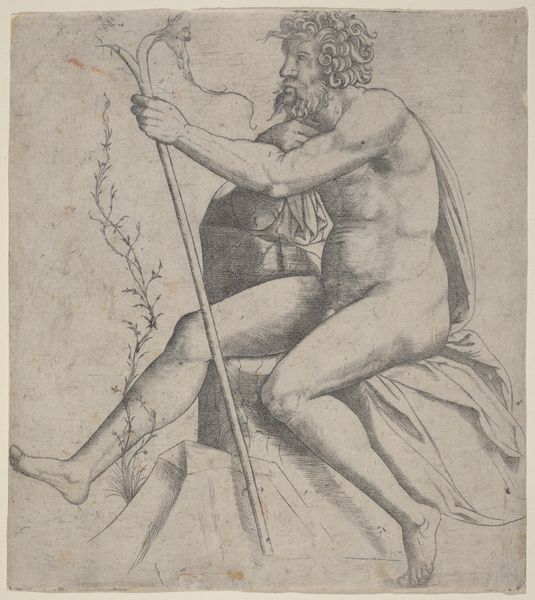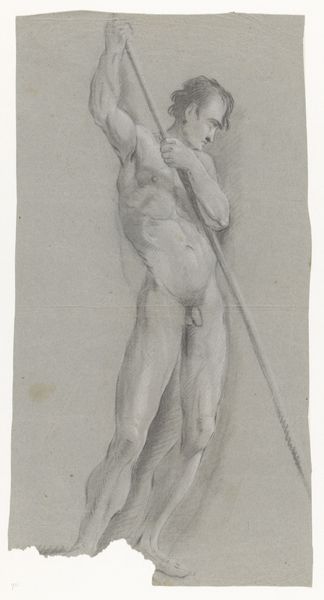
Study from behind of a naked man playing a cello, from the 'Principios para estudiar el Nobilísimo y Real arte de la Pintura' (Madrid 1693) 1688 - 1698
0:00
0:00
drawing, print, engraving
#
drawing
#
baroque
# print
#
figuration
#
history-painting
#
nude
#
engraving
#
male-nude
Dimensions: Sheet: 9 1/16 × 6 1/4 in. (23 × 15.8 cm)
Copyright: Public Domain
José García Hidalgo made this study of a naked man playing the cello in Madrid, around 1693, and it was intended for inclusion in his treatise on painting. This book aimed to elevate the status of painting within Spanish society. In the late 17th century, Spanish art academies were still trying to solidify their place within the broader cultural landscape. They sought to establish painting as a liberal art, akin to poetry or music, rather than a mere craft. That ambition is evident in the artist's choice to depict a nude male figure—traditionally associated with high art—engaged in playing the cello. By linking painting to music and classical ideals, Hidalgo sought to imbue the profession with intellectual and cultural prestige. To fully appreciate Hidalgo's project, we can consult archival records of the art academies and patronage networks of the period. Understanding the social and institutional context in which the artist was working allows us to see this study not just as a drawing, but as a statement about the value and purpose of art itself.
Comments
No comments
Be the first to comment and join the conversation on the ultimate creative platform.
